Planet Scenes January 2024
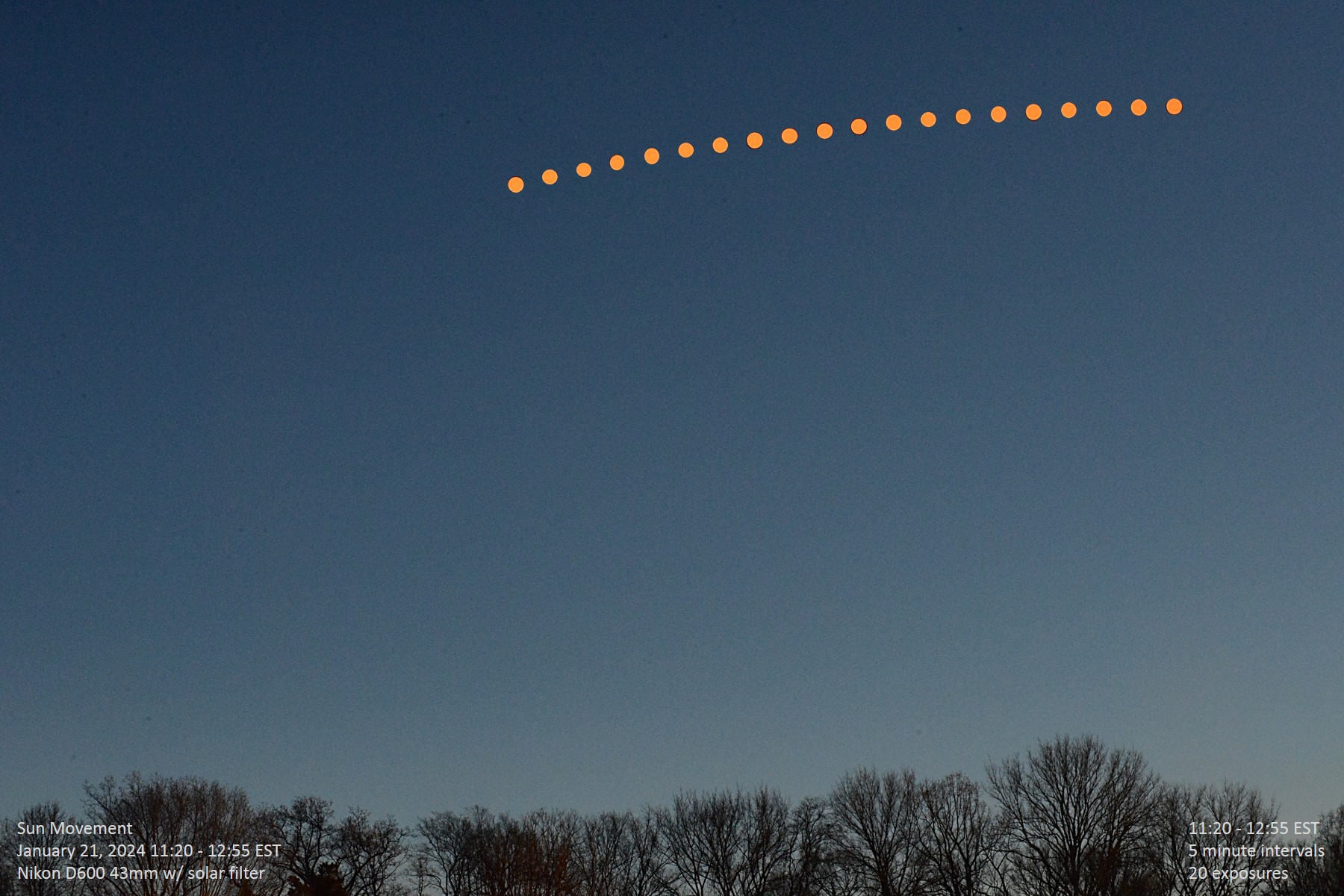
|
January 21 One of the images I would like to create from the solar eclipse in April is a sequence shot of the Sun from beginning to end of the eclipse, but I don't currently have the software to do that, so I decided to attempt something like that in everyone's favorite presentation software. |
|||
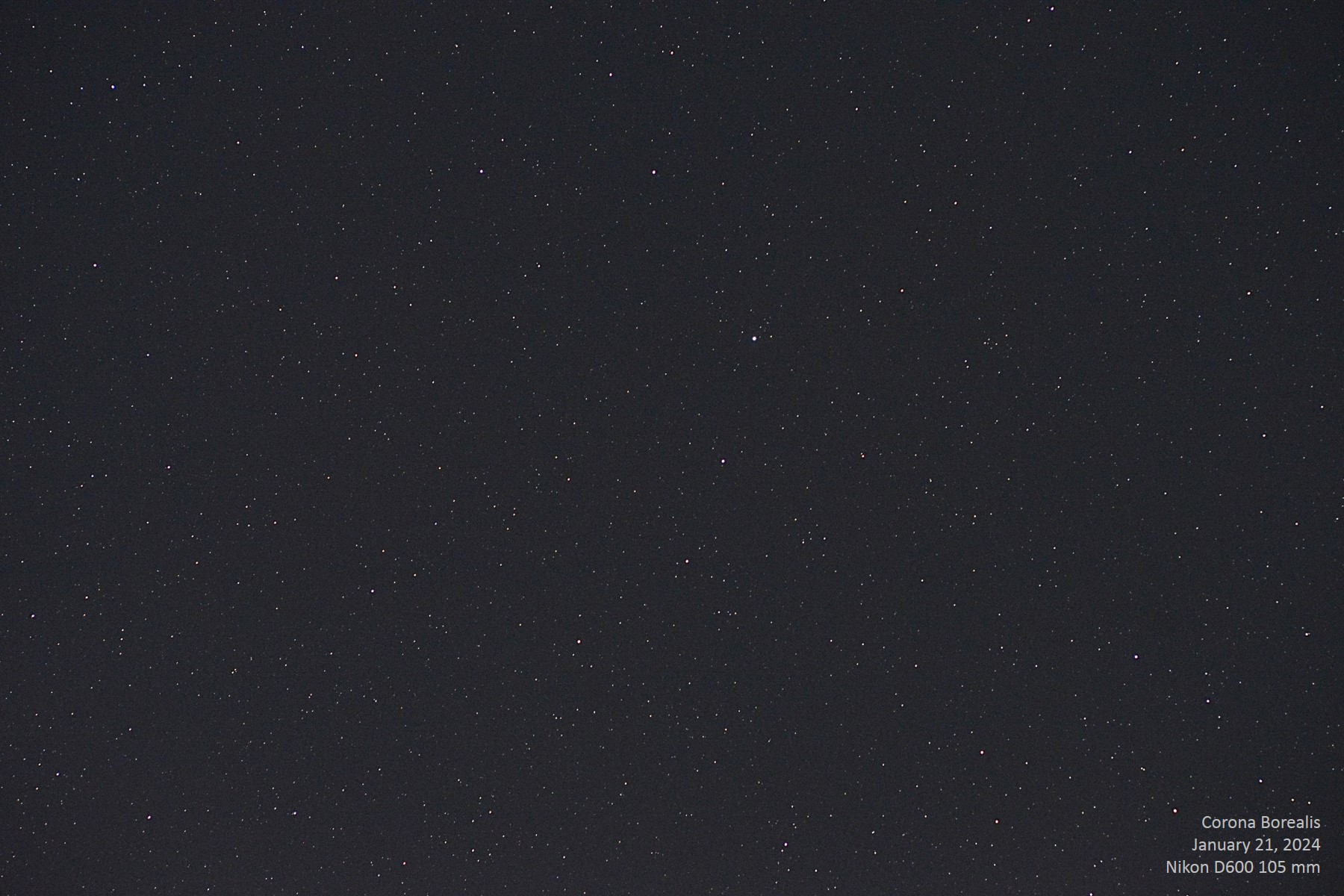
|
January 21 The famous variable star T Coronae Borealis, the "Blaze Star" (not Blaze Starr, the stripper :), is predicted to erupt and become a bright nova sometime in 2024, so we are going to periodically check in on the constellation to see what T CBr is doing. Sky & Telescope featured articles on the star in 2016 and 2006. The latest announcement from the American Association of Variable Star Observers (AAVSO) describes the fluctuations the star has undergone in the last year that strongly suggest it should erupt sometime in the next 10 months or so. |
|||
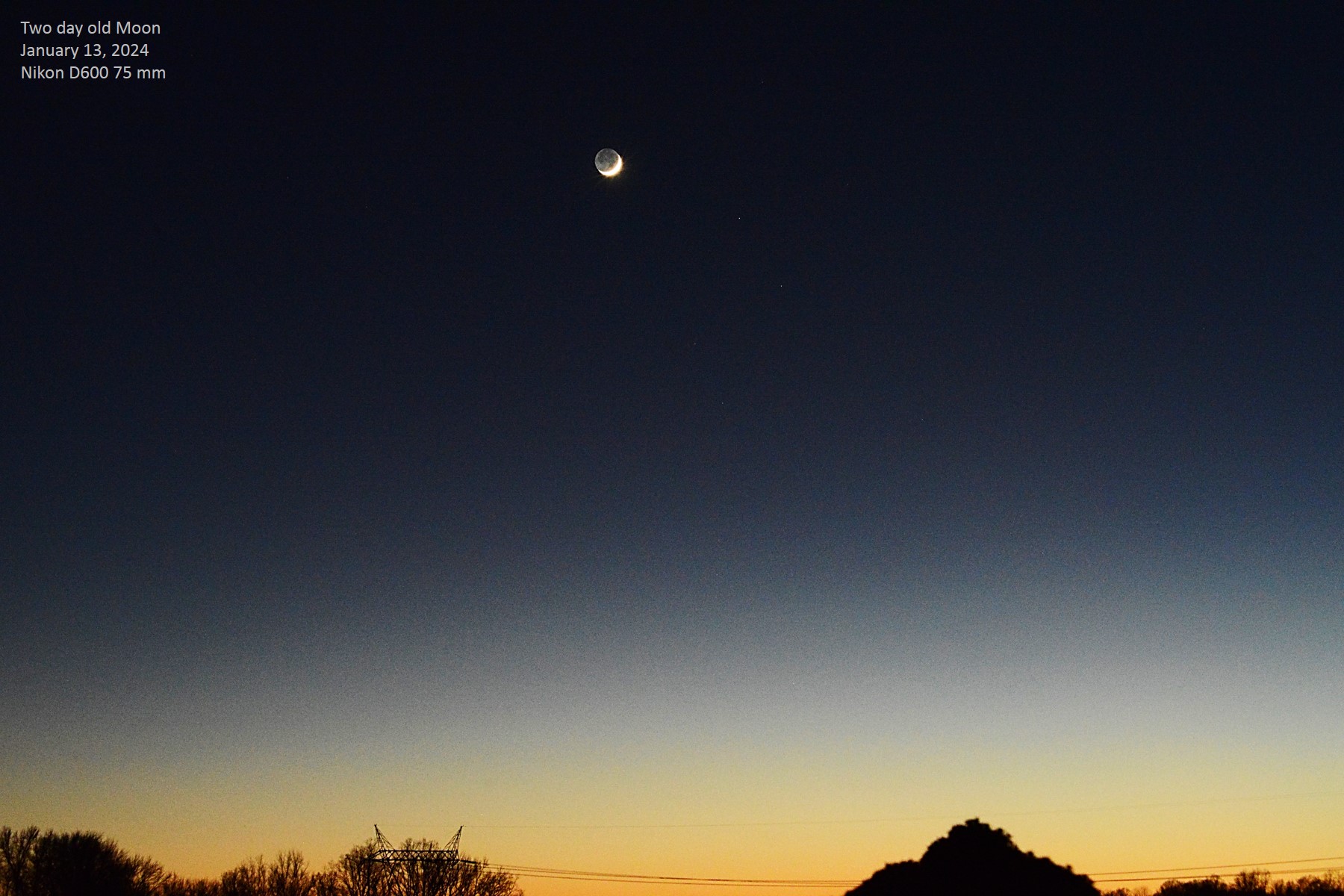
|
January 13 The two-day old Moon is already high above the western horizon owing to the steep angle of the ecliptic. Saturn is not too far above the Moon but I was not able to catch him in the scene along with the horizon at the zoom setting I used. |
|||
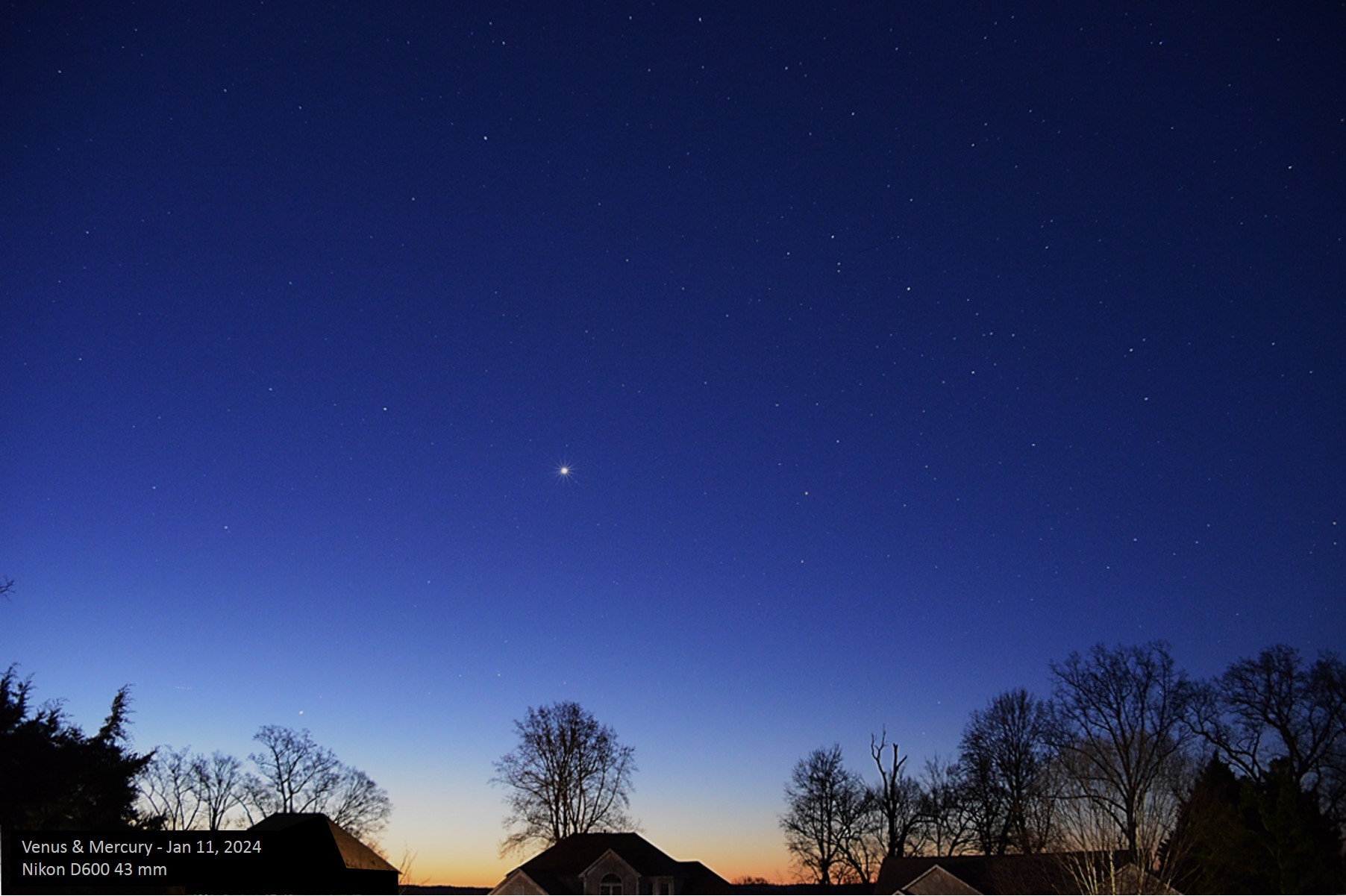
|
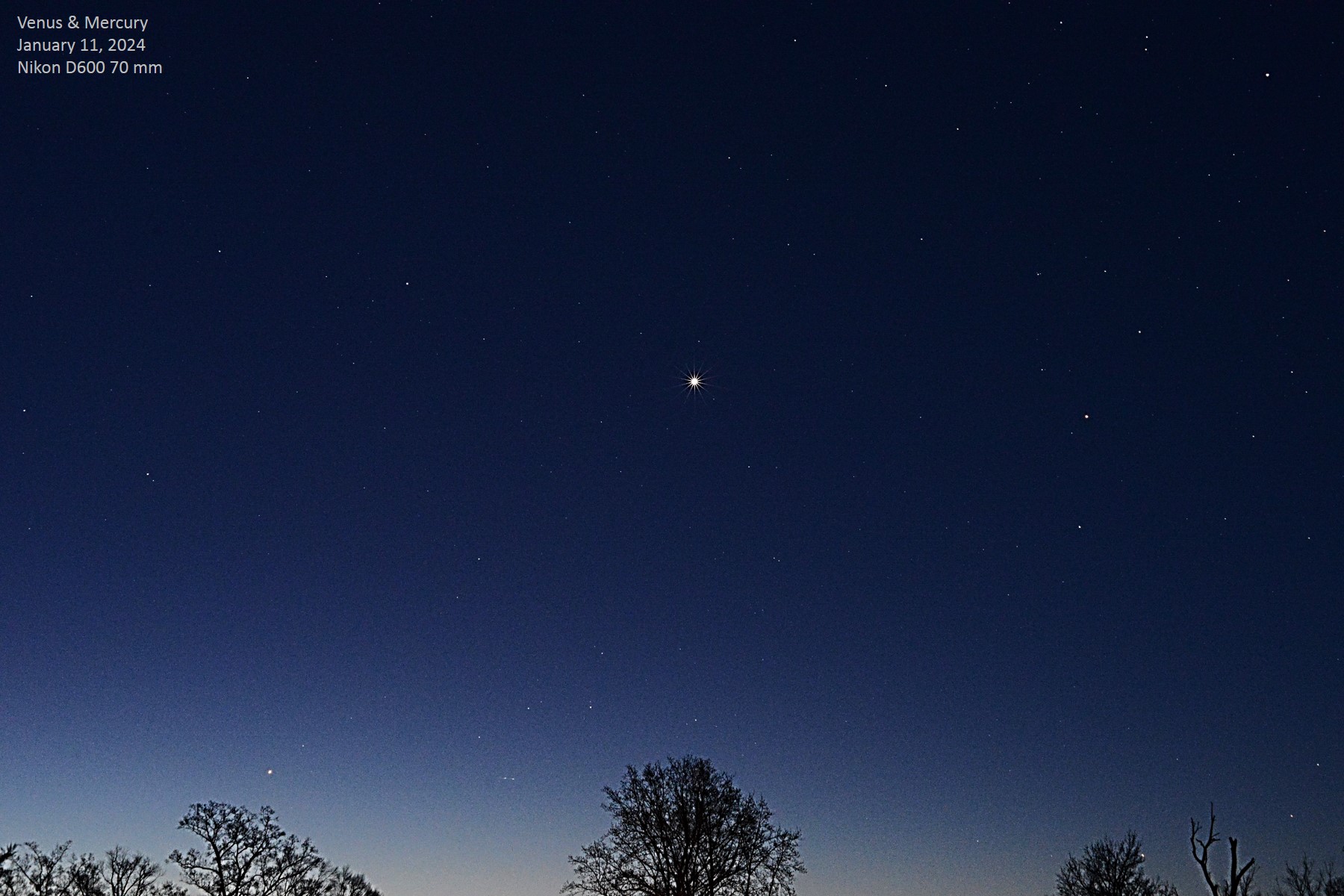
|
January 11 Venus and Mercury continue to dance in the dawn sky. Here they are just under 12° apart, both suspended about 1°30' north of the ecliptic. By the end of the month, Mercury will have fallen back toward the Sun enough to meet up with dim Mercury. |
||

|
January 8 Venus and Mercury are joined by the crescent Moon this morning, but I got out too late to catch the background stars, so this is a view about 50 minutes before sunrise. |
|||
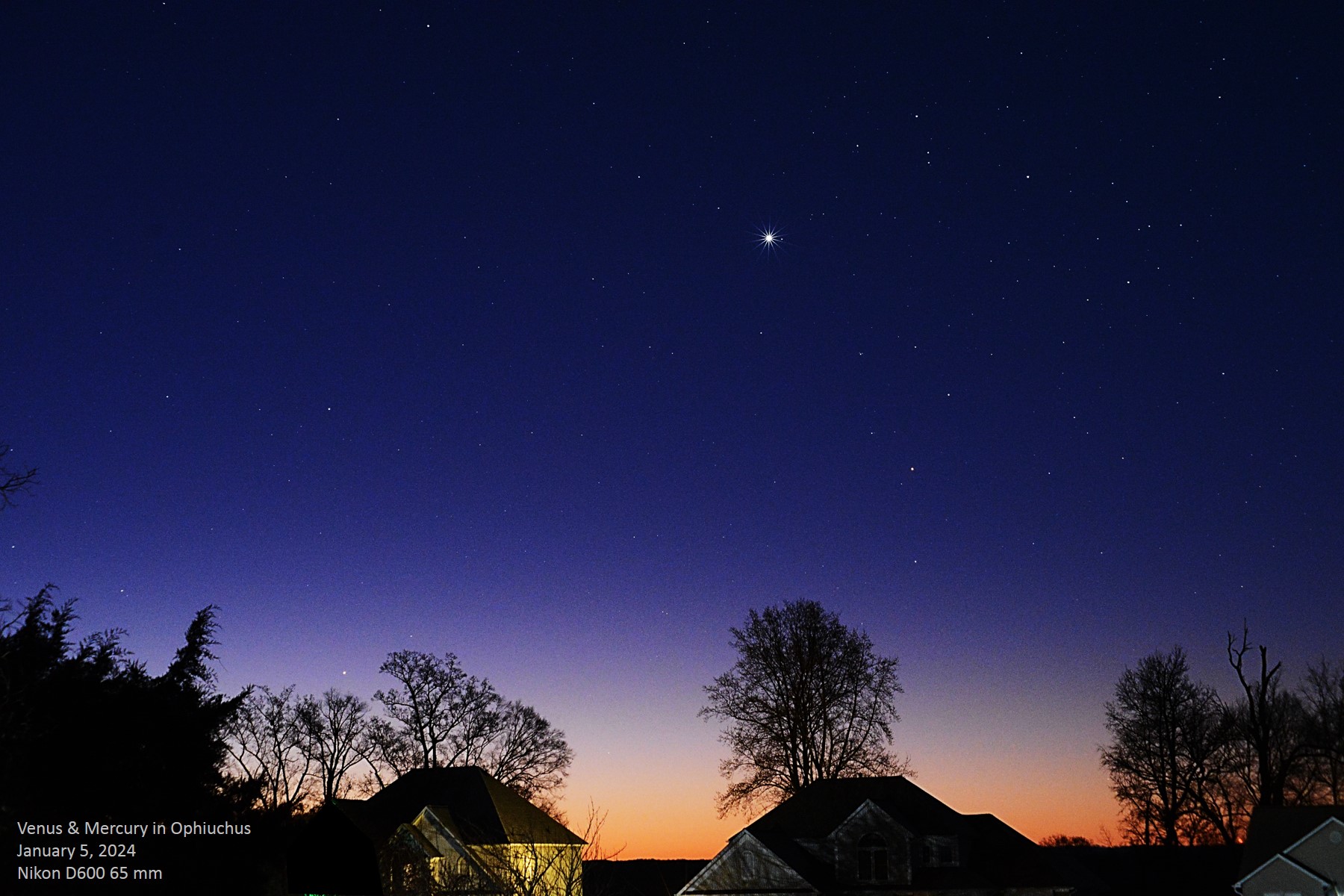
|
January 5 Venus and Mercury make a pretty sight in the morning sky above and to the left of the stars of Scorpius. I zoomed in a little to get a more detailed look compared to most of the other images. |
|||
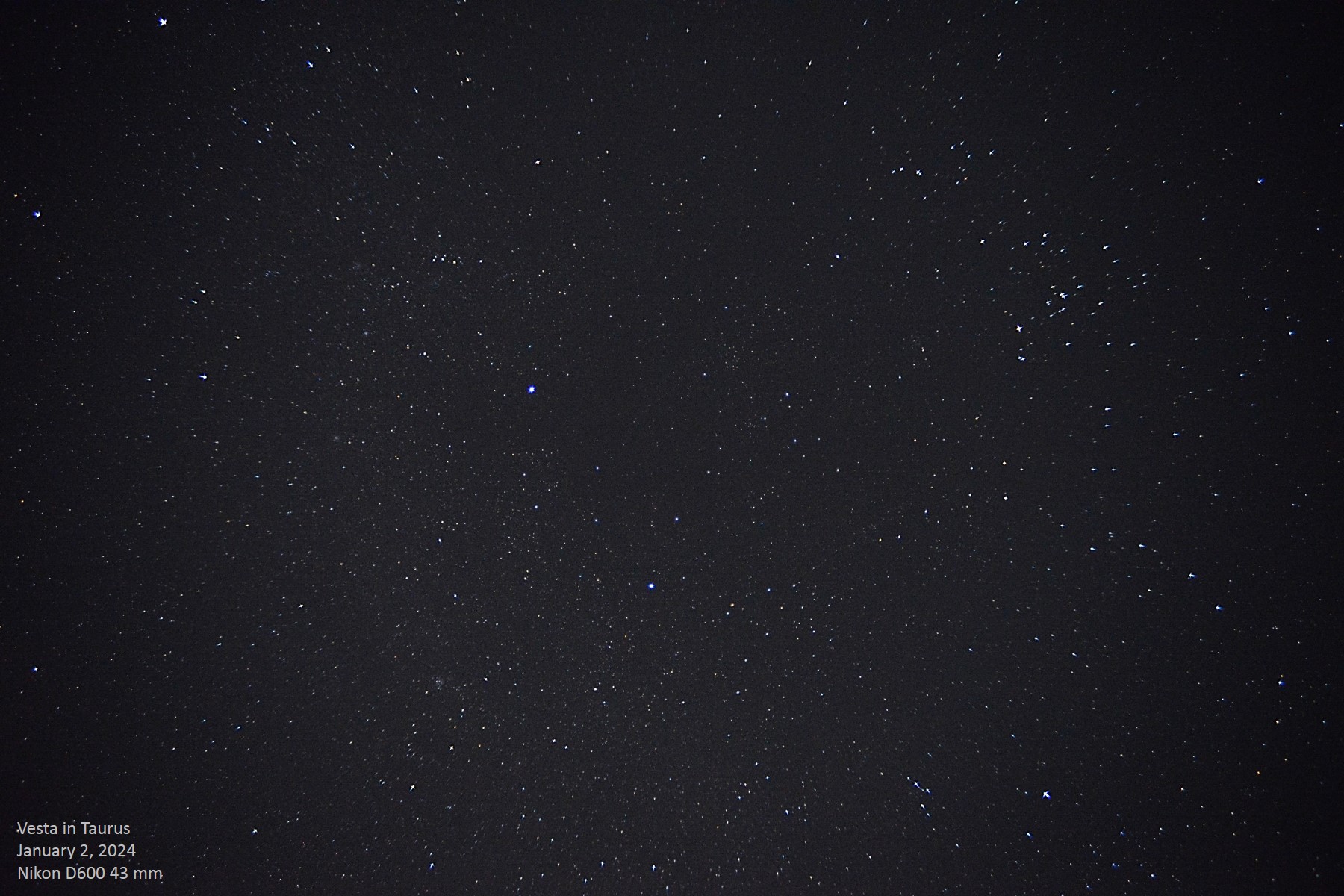
|
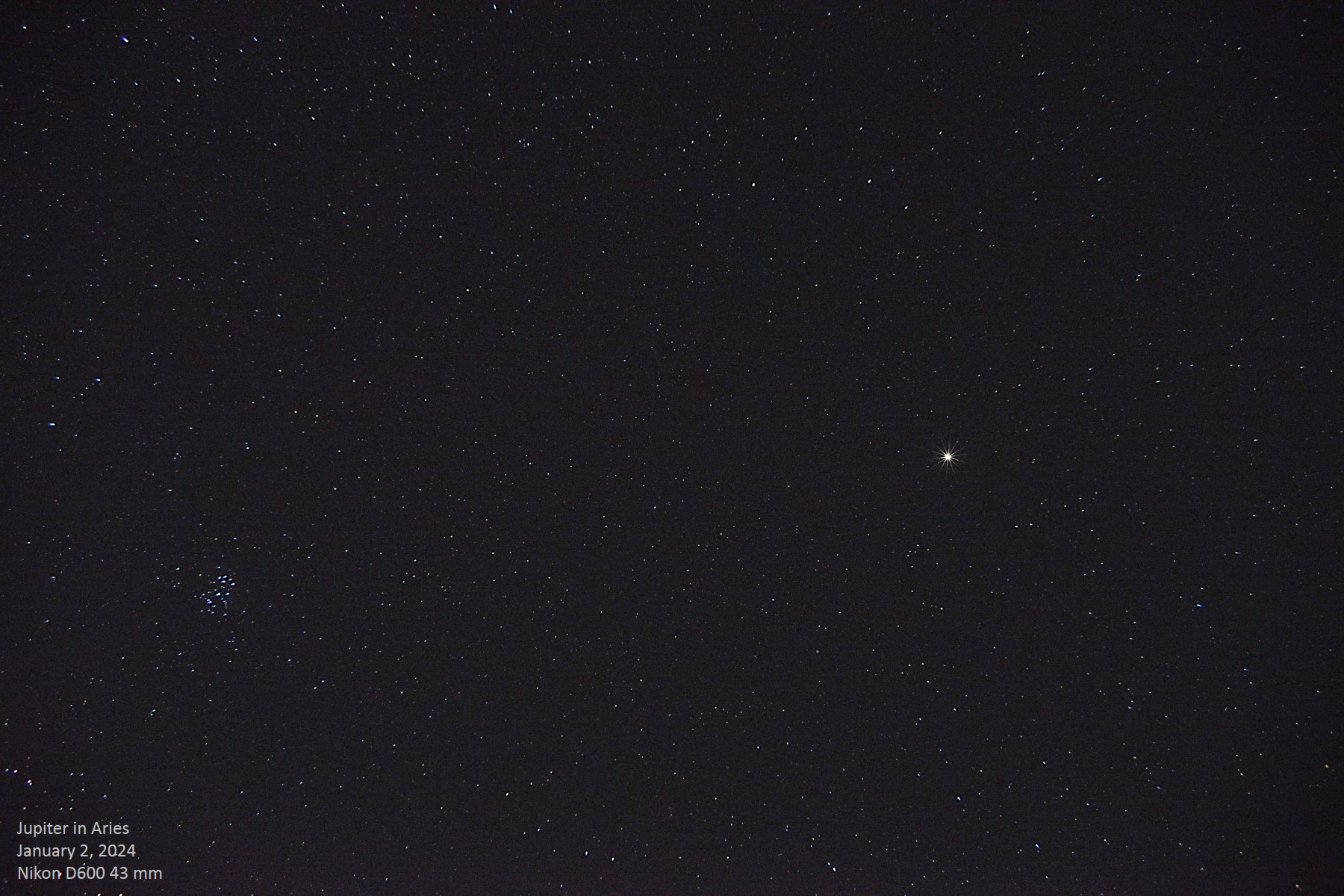
|
January 2 The early evening sky is still dominated by Jupiter. He is joined in Aries by Uranus, and in the next zodiacal constellation down toward the east, Taurus, the brightest asteroid, Vesta, is just past opposition in late December 2023. |
||